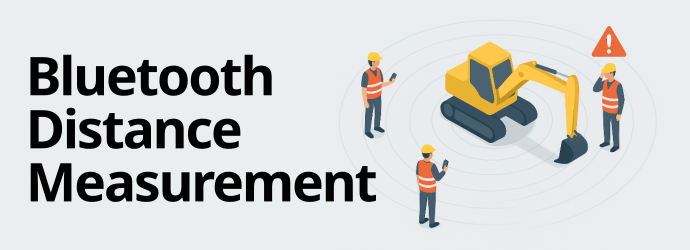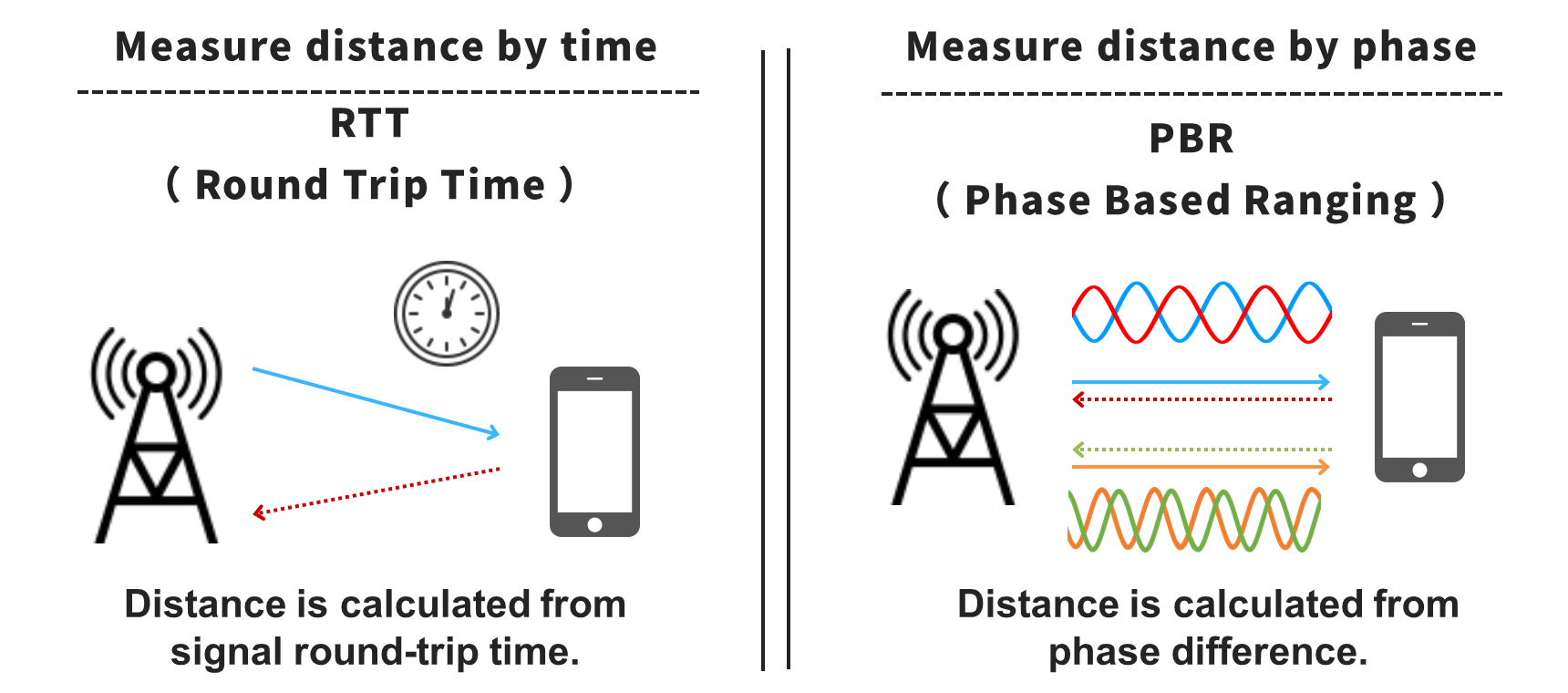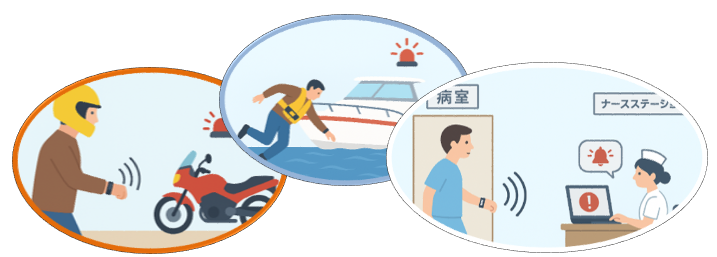
Aiming to harness the evolution of Bluetooth®1
Until now, we measured distance using RSSI.
This approach has the following characteristics:
This approach has the following characteristics:
- Estimates distance from received signal strength (RSSI)
- Meter- to tens-of-meters-level accuracy
However, large errors can be an issue in practice.
Now we introduce Channel Sounding , a technique regarded as an upgrade over RSSI-based ranging. It offers:- High accuracy on the order of 0.3-0.5 meters
- Compatible with Bluetooth devices that support Channel Sounding
- Secure measurements with encryption and authentication
- Low power consumption for long operating times
Distance is measured with two techniques-RTT (round-trip time) and PBR (phase-based ranging).

We convert the phase data measured by phase-based ranging (PBR) to the time domain via an inverse Fourier transform (IFFT/IDFT). We then detect the main peak of the resulting time-domain response to estimate the propagation distance. This approach enables higher-accuracy ranging.

Run system checks for construction machinery.
- Measure the distance between registered receivers tags and machines in real time.
- On approach, automatically alert with warning lights/alarms or engage an emergency stop.
- Help prevent accidents involving large/heavy equipment before they happen.

Other Use Cases
- Smart keys for vehicles
- Man-overboard (MOB) detection for vessels
- Patient location tracking in hospitals

- The Bluetooth® word mark and logos are registered trademarks owned by Bluetooth SIG, Inc., and any use of such marks by [Licensee Name] is under license. Other trademarks and trade names are those of their respective owners.
![Asahi Denso Co., Ltd. | The special maker for Human and Machine Interface [Open the way]](/uploads/op-asahidenso/en-logo.png)





